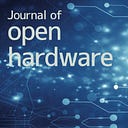Open Hardware Distribution and Documentation Working Group: The importance of a name

This is the tenth post (and the first of 2021) of the series of the Open Hardware Distribution and Documentation Working Group (which we’ve shortened to “DistDoc”). The group aims to produce a proof of concept for distributed open science hardware (OScH) manufacturing, exploring key aspects like quality, documentation, business models and more using as a starting point a paradigmatic case study. We hope the experience motivates others to discuss and implement new strategies for OScH expansion.
By Julieta Arancio
Happy new year! The group has resumed its periodic virtual gatherings, and after personal updates, the different working groups shared their news. One of them had the task of writing down the specifications that manufacturers need for building an OpenFlexure (OF) microscope. As a result of this process, they came up with important questions for the rest: what is the best way to approach marketing and commercialization for an open science hardware product? One of the relevant aspects here is the relationship between the developer and the manufacturing teams. That question brought us to what is implied in a name, and how does branding work for distributed, open science hardware products.
One of the reasons for branding is quality: if all manufacturers use the same name, then the developer team needs to have a way to ensure that the users, who trust the name, get what they want in exchange. Another reason for branding is attribution. People who develop a project deserve credit for it. The other side of the coin is versioning: manufacturers who innovate should be able to differentiate their new products. In the end, a name represents a mechanism that users, developers and manufacturers trust that will provide them with different benefits.
There are many examples of different branding options in open hardware. Probably the most well-known is Arduino and its “Arduino compatible” alternative. In the quest of building a scheme that is modeled after OF but applicable to other projects, working group member Michael, came up with four basic options for organizing work:
- A single public brand: Distribute OpenFlexure under the OpenFlexure brand, manufacturing partners are not visible to end users
- LocalBrand, an OpenFlexure Device: Manufacturing partners brand their own version of OF and license “an OpenFlexure Device” from OF central
- Quality mark: Manufacturing partners brand their own version of OF, while a single quality mark guarantees that OF devices with the mark meet minimum standards.
- OF-compatible: Manufacturing partners brand their own version of OF, and are able to claim that their version is ‘compatible with OpenFlexure’ to help people understand how the device can be used.
These four alternatives move from more centralized to more decentralized schemes, covering the topics of marketing work, credit, brand value, quality and liability. A centralized approach (1) has advantages related to the ability to completely enforce quality standards, or allowing easy to track versioning. The downside is that manufacturers have little incentive to contribute, and that the workload is heavily associated with the developer team.
On the other hand, less decentralized approaches distribute the commercial/marketing workload between developers and manufacturers and give more incentives for manufacturers to contribute, but demand greater coordination efforts. How to ensure changes are tracked, quality procedures are followed, proper credit is given to the developers? These are the efforts that, in the end, will determine how quality standards are met, and influence the overall trust that users have in the brand.
